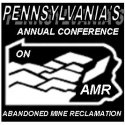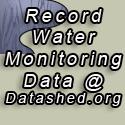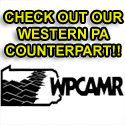EPCAMR develops green infrastructure concept plans for green spaces in Wilkes-Barre with $49,500 grant through the National Fish Wildlife Foundation Chesapeake Bay technical capacity program
This technical assistance grant project completed the planning and conceptual designs for water quality improvement projects in nine (9) public green spaces in the City of Wilkes-Barre at no cost to the City. The projects were identified in the City of Wilkes-Barre, PA’s Green Action Plan developed and written by EPCAMR Executive Director, Bobby Hughes, in consult with the City of Wilkes-Barre Bureau of Operations, and LandStudies, Inc. in 2017. In 2018, EPCAMR submitted the grant and partnered with Clauser Environmental, LLC, and the City of Wilkes-Barre to complete the Chesapeake Bay Technical Capacity Grant. The project included the identification of green infrastructure and City greening opportunities, creating concept plans highlighting potential best management practice (BMP) locations, and the development of conceptual details for the various BMPs proposed. All of the watershed areas had also been previously mining impacted by historic anthracite deep and surface mining that have led to various environmental impacts to the land and streams.
Clauser Environmental, LLC provided EPCAMR:
- Conceptual designs for greening 9 public spaces.
- A project implementation plan report highlighting green infrastructure opportunities & proposed BMPs.
- An estimate of the efficiency of the proposed BMPs effectiveness for pollution removal.
- An educational/ outreach component to include a presentation with local elected officials, volunteers, and staff responsible for the public spaces led by EPCAMR.
Project outcomes after many of the identified projects seek additional funds for implementation will include:
- Improved water quality and reduced stormwater flows in the Susquehanna River Watershed & Chesapeake Bay
- Education and outreach to local elected officials, volunteers, and staff regarding the benefits of urban greening within the City of Wilkes-Barre
- An improved aesthetic in the City of Wilkes-Barre as the green infrastructure projects are completed
- A plan for decreased infiltration to the underground mine pools that will aid in the reduction of abandoned mine drainage (AMD) volumes of polluted mine water and metal loading to the Susquehanna River and ultimately, the Chesapeake Bay watershed
This project was a priority for funding because it met a critical area of need identified by the City of Wilkes-Barre, EPCAMR, and the previous partner, LandStudies, Inc. in the Green Action Plan. The complete report can be downloaded here.
EPCAMR and Clauser Environmental, Inc. completed the following recommendations from the Green Action Plan:
- Identified green infrastructure opportunities on Public Square in Downtown Wilkes-Barre (#14)

This image shows a few green infrastructure recommendations to the rooftops of the restrooms on the Square and shade tree plantings.
- Identified green infrastructure and city greening opportunities along Pennsylvania Blvd (#17)
- A plan for the establishment of riparian buffers and invasive species management along Laurel Run and Mill Creek in Hollenback Park and Golf Course and to identify green infrastructure opportunities (#22)

This image shows the Hollenback Park and Golf Course Green Infrastructure, Riparian Restoration and other BMPs recommended for the Park.

Japanese Knotweed Invasive Plant Species along the entire length of the dry Mill Creek streambed that is impacted by past mining before its confluence with the Laurel Run tributary along Hollenback Park and Golf Course.
- Identified green infrastructure opportunities in Scouten Lee Park to improve water quality and reduce runoff into Laurel Run (#23)

This poster shows the various Green Infrastructure examples and stormwater Best Management Practices at the Scouten Lee Park.

This shows a severely blocked stone masonry culvert along the railroad grade within Scouten Lee Park that is severely blocked and aggraded with sediment and gravels from years of deposition from a stormwater outlet that needs maintenance. The top elevation of the conveyance channel all the way to Laurel Run is several feet higher than the bottom of the two stormwater outlets shown causing backup of stormwater and blockage of sediments.
- Identified green infrastructure opportunities at Dillon Street Park (#25)

This image shows some of the recommended Green Infrastructure ideas and stormwater BMPs for Dillon Street Park.
- We identified green infrastructure opportunities at Frances Slocum Park (#32), along Scott Street and N. Pennsylvania Avenue.

This image shows the Green Infrastructure Opportunities at Frances Slocum Park along N. Pennsylvania Boulevard.

This area was recommended for a Pine Cone Station for youth and some benches and picnic tables to encourage families to visit and play in nature.
- Identified and plan for numerous BMP green infrastructure opportunities in Parsons Park (#39)
- Identified green infrastructure opportunities in Spruce Street Park (#41)

This image shows many Green Infrastructure opportunities for Spruce Street Park and other Park refurbishment ideas.
- Identified green infrastructure opportunities in Madison Park (#44)

This image shows the Green Infrastructure Opportunities at Madison Park including new sedum roofs for the ballfield dugouts.

One of the dugouts at the Madison Street Ballfield that can be easily retrofitted with a sedum roof to replace the rotted and weathered roof.
The project met the following Chesapeake Bay Watershed Implementation Plan (WIP) Program Milestones and Technology and criteria of Pollution Reduction Actions in the Chesapeake Bay Phase II WIP in the following ways:
- Supported additional funding to develop and implement comprehensive and integrated planning to enable local governments to better manage stormwater, reduce nutrient loading from runoff, and generate nutrient and sediment credits.
- Engaged county and municipal governments to identify areas and opportunities for retrofitting to address existing stormwater problems under their MS4 Program. This included targeting opportunities for cost-effective stormwater retrofits including offsetting provisions. Recommendations are encouraged to be shared with the Wyoming Valley Sanitary Authority, a partner of EPCAMR’s in the Wyoming Valley.
- Better utilized funds and resources to target areas of greatest need.
- Engaged the appropriate stakeholders to identify new and revised BMPs, and pollutant removal efficiencies for BMPs such as urban tree planting, bio-infiltration trenches, rain gardens, rain barrels, canopy establishment, and stream and flood plain restoration.
- Explored options to develop efforts that encourages stormwater capture and reuse options that promote cost savings for landowners while advancing nutrient reductions.
Clauser Environmental, LLC completed background site mapping, conceptual designs, the project narrative, visual aids for the education and outreach workshop, and the grant reports. EPCAMR Staff accompanied Dr. Aaron Clauser in the field throughout the City of Wilkes-Barre, PA to jointly develop conceptual BMP ideas, review all of the project deliverables, take photos, participated in the education and outreach activities, and will be a project partner in the implementation of the proposed future BMPs should they City decide to pursue them or support EPCAMR’s pursuit of some of the recommendations.
The City of Wilkes-Barre Staff reviewed the project deliverables, coordinated getting EPCAMR and Clauser Environmental, LLC to be able to present before the City Council and the public in attendance on December 6th’s Regular Session. Lessons learned in this project will be highly transferable to other communities within the Chesapeake Bay region and the Wyoming Valley. EPCAMR is a regionally important, non-profit environmental organization that is dedicated to improving water quality and promoting the spirit of cooperation among various governmental agencies, municipalities, watershed associations, industry, and conservationists. EPCAMR often serves as a liaison between conservationists, local governments, and local communities. In this role, EPCAMR is well positioned to extend the work completed here to other areas within the Eastern Pennsylvania portion of the Chesapeake Bay region.
EPCAMR, Clauser Environmental, LLC, anticipates that the City of Wilkes-Barre will be supportive of seeking opportunities that are in alignment with the City’s priorities and funding for implementing the conceptual plans to install and construct the various recommended BMPs. EPCAMR is particularly interested in implementation because the project areas are located above abandoned mine workings in the Laurel Run tributary to the Mill Creek watershed and the Solomon Creek Watersheds. Stormwater from these drainage areas in many areas, infiltrate into the mine pool and contributes to AMD after it becomes contaminated underground, and then discharges to local streams in the Susquehanna River watershed. The recommended BMPs will improve local water quality and decrease pollution to the Chesapeake Bay.















You must be logged in to post a comment.